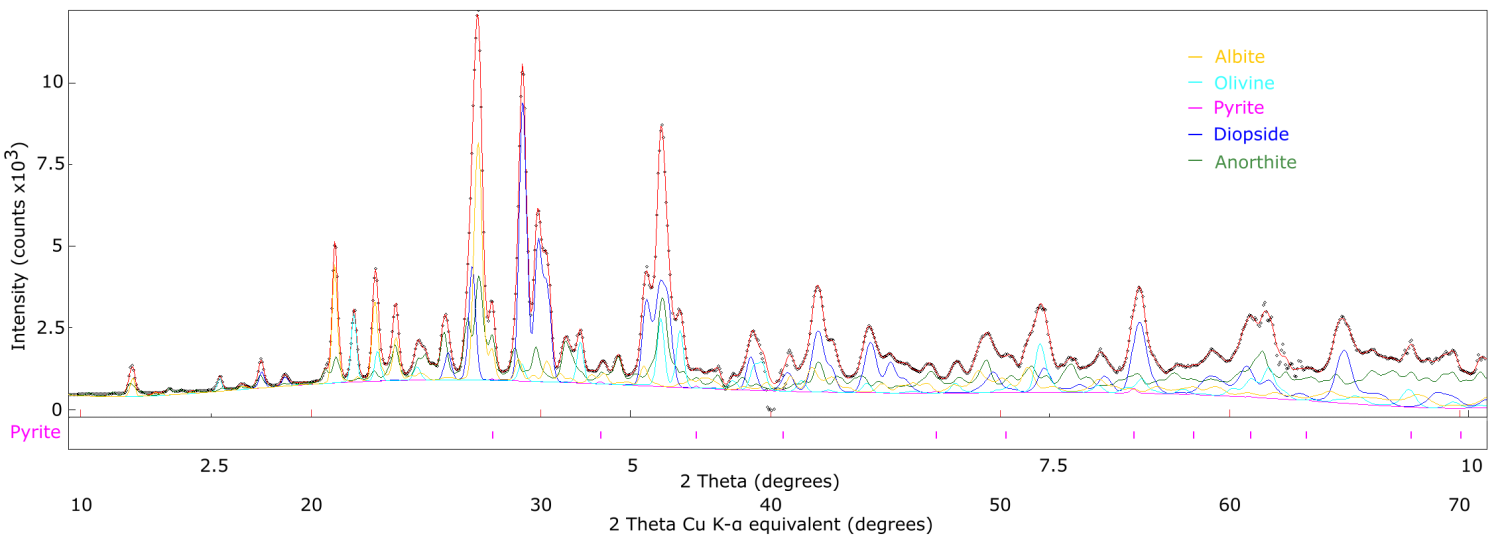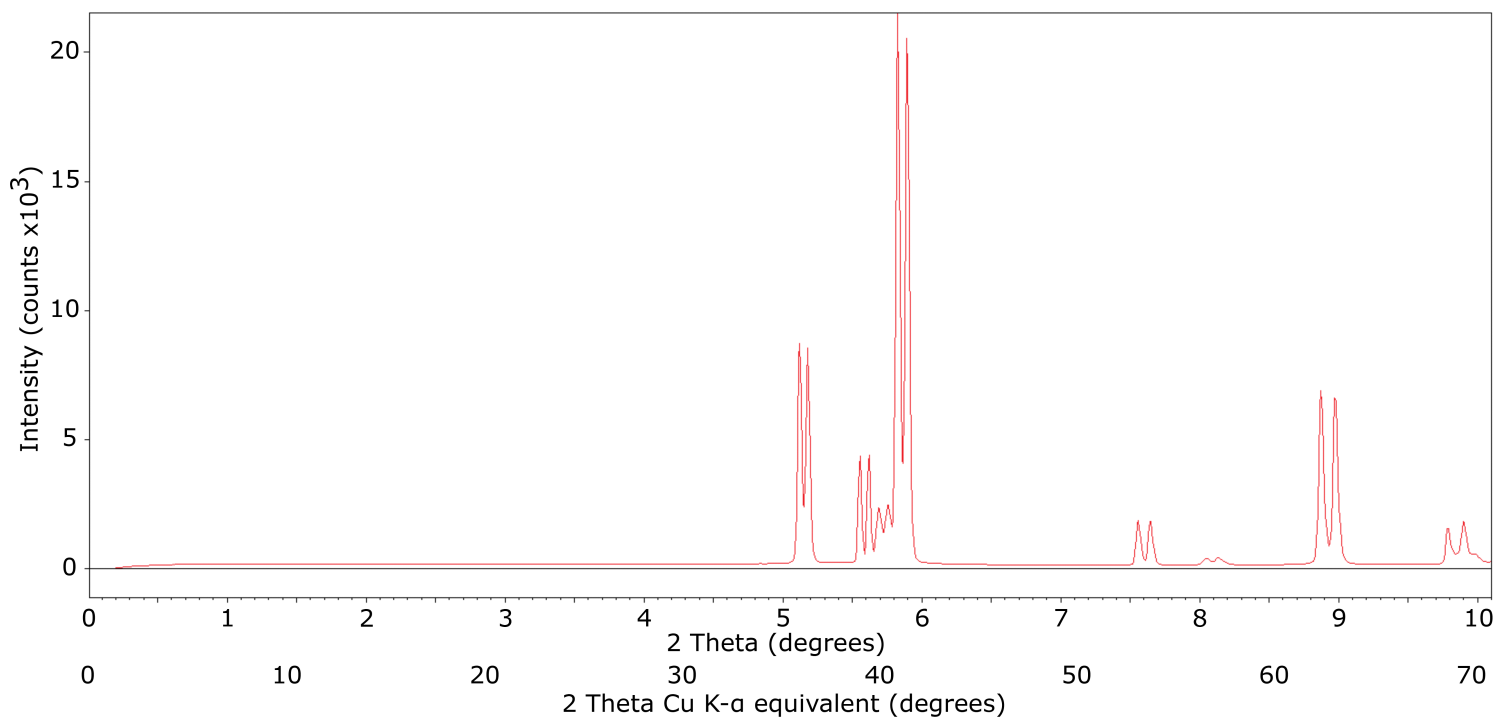Synchrotron X-ray diffraction for sealed Mars Sample Return sample tubes
- 1Department of Physics and Astronomy, University of Leicester, Leicester, United Kingdom of Great Britain (lfa7@leicester.ac.uk)
- 2Purdue University, Department of Earth, Atmospherics, and Planetary Sciences, West Lafayette, USA
- 3NASA Johnson Space Centre, Houston, USA
- 4University of Maryland/NASA Goddard Space Flight Centre, College Park, USA
- 5Texas A&M University, College Station, Department of Geology and Geophysics, USA
Introduction: NASA and ESA are collaborating on a Mars Sample Return (MSR) mission which aims to retrieve drill cores of Martian rock for terrestrial analysis, from Jezero Crater and the Perseverance Rover. Up to 30 samples, inside sealed titanium sample tubes, are planned to be returned to Earth. Due to the potential for back-contamination from possible extant life on Mars, strict contamination control measures must be taken for the purposes of planetary protection, as well as to prevent contamination of the samples [1]. These measures place restrictions on the way measurements can be performed on the samples until they have been sterilised or judged safe. As the first step of scientific analysis, all samples will undergo a set of measurements called Pre-Basic Characterisation [2]. Pre-BC will include X-ray CT and magnetic measurements. These data along with later Basic Characterisation data will be used to decide experimental plans for multi-instrument analyses on the Mars samples. Powder X-ray Diffraction (XRD) is currently planned for a later stage of sample analysis after the sample tubes have been opened due to limitations with conventional commercial X-ray diffractometers [3,4]. While a conventional X-ray tube cannot provide an appropriate X-ray beam, a synchrotron source is capable of much higher intensities and precise wavelength selectivity. Synchrotron facilities also allow more suitable diffraction geometries for the size and shape of sample expected from MSR. We have carried out experiments at Diamond Light Source’s I12-JEEP beamline to test the feasibility of XRD analysis of samples on sealed MSR sample tubes.
Method: Titanium alloy tubes were prepared as analogues to Perseverance’s sample tubes. A regolith sample analogue consisting of Icelandic basaltic sediment from the NASA SAND-E analogue mission [5] was used. Synchrotron powder XRD measurements were taken at the I12-JEEP beamline. A beam with an energy of 54.4 keV and a 0.5 × 0.5 mm square profile was used, with a 30 s exposure time. Measurements were taken of three different sample configurations: the sediment inside the analogue sample tube, the sediment in a negligible diffracting polymer tube, and the empty sample tube (for later subtraction from the sample-in-tube pattern). A reference measurement was taken using a conventional diffractometer (Bruker D8 Advance) on powdered analogue to determine the modal mineralogy. QualX 2.0 [6] was used to identify the phases present and MAUD [7] to perform quantitative Rietveld refinement using the Crystallographic Open Database [8].

Figure 1: Rietveld refinement of the Icelandic sediment in the sample tube with the Ti signal subtracted. Circles are diffraction data, the red line is the total Rietveld fit, and the other colours show the diffraction contributions of the individual phases identified via database search-matching.
|
Identified mineral |
Difference (wt.%) |
Larger refinement error (wt.%) |
|
Pyroxene |
2.4 |
4.2 |
|
Plagioclase |
0.3 |
— |
|
Olivine |
2.1 |
1.7 |
Table 1: Differences in mean quantity of the main three identified minerals with and without sample tube analogue.
Results & Conclusion: Synchrotron data was significantly less noisy than conventional data despite the larger grain sizes, and refinements had good fits. The expected pyroxene, plagioclase, and olivine phases were clearly identified in every measurement, an example of which can be seen in Fig. 1. The phase quantity differences between the reference measurement and synchrotron measurements varied, up to 8.4 wt.%. The diffraction pattern of the empty tube analogue shows that the regions of the diffraction pattern affected by the walls’ diffraction were quite narrow (see Fig. 2). The subtraction of the empty tube pattern from the sample-in-tube data was suboptimal but still improved fit quality. An improved subtraction would likely make use of Rietveld refinement of the peaks to be subtracted. Table 1 shows the differences between the mineral phase quantities calculated from the subtracted Ti tube measurement and the polymer tube measurement, with differences of similar size to the calculated Rietveld refinement uncertainties, showing good agreement despite the sample tube’s effects. Worst-case X-ray dosages that the sample analogue was exposed to were calculated to be 61 Gy. This is well below the threshold which would affect potential amino acid content for Mars material [9]. We show that quantitative XRD phase analysis can be successfully carried out on returned Mars samples in unopened sample tubes using a synchrotron X-ray source, and thus could be included in the Pre-BC phase of returned sample science. This would provide mineralogical data much earlier in the sample science process, improving decision-making around sample science, curation, and handling. This work is published in Meteoritics & Planetary Science [10].

Figure 2: Rietveld refinement XRD pattern of the empty titanium sample tube.
Acknowledgements: This work was funded by STFC and UKSA Emerging Technologies grant UKSAG22_0031_ETP2-030. Beamtime on beamline I12 was provided by Diamond Light Source under proposal MG30591. The SAND-E program supported by NASA PSTAR program #80NSSC18K1519.
References: [1] UN (2002) UN Treaties & Principles on Outer Space. [2] MSPG 1, Meyer, M., et al., (2019), “Science in Containment”. Unpublished report, 05/05/22 at https://mepag.jpl.nasa.gov/reports.cfm. [3] Meyer M. A. et al. (2022) Astrobiology, 22(S1), 5–26. [4] Tait K. T. et al (2022) Astrobiology, 22(S1), 57–80. [5] Ewing R. et al. (2020) LSPC LI, Abstract #JSC-E-DAA-TN78511. [6] Altomare A. et al. (2015) J. App. Crystallography 48(2), 598–603. [7] Lutterotti L. et al. (1999) IUCr: Newsletter of the CPD, 21(14–15). [8] Gražulis S. et al. (2012) Nucleic acids research, 40(D1), 420–427. [9] Friedrich J. et al. (2016) Meteoritics & Plan. Sci., 51(2), 429-437. [10] Adam L. et al. (2023) Meteoritics & Plan. Sci., 59(1), 40-54.
How to cite: Adam, L., Bridges, J., Bedford, C., Holt, J., Rampe, E., Thorpe, M., Mason, K., and Ewing, R.: Synchrotron X-ray diffraction for sealed Mars Sample Return sample tubes, Europlanet Science Congress 2024, Berlin, Germany, 8–13 Sep 2024, EPSC2024-336, https://doi.org/10.5194/epsc2024-336, 2024.